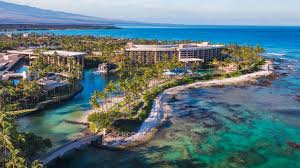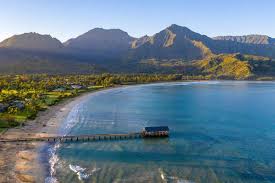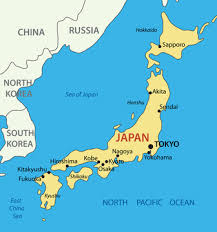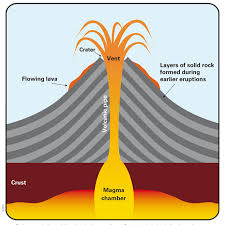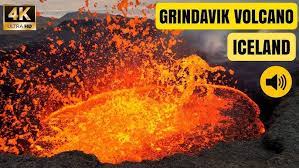Indulge in the Culinary Delights of Roy’s Hawaii

Roy’s Hawaii: A Culinary Journey Through the Islands
Roy’s Hawaii is a renowned culinary destination that offers a unique dining experience inspired by the diverse flavors of the Hawaiian Islands. With multiple locations across Hawaii, Roy’s has become a favorite among locals and visitors alike for its innovative fusion cuisine and warm hospitality.
Founded by Chef Roy Yamaguchi, Roy’s Hawaii blends traditional Hawaiian ingredients with global culinary techniques to create dishes that are both familiar and exciting. From fresh seafood caught off the shores of Hawaii to locally sourced produce, each dish at Roy’s reflects the rich bounty of the islands.
One of the signature dishes at Roy’s is their Misoyaki Butterfish, a melt-in-your-mouth delicacy marinated in a sweet and savory miso glaze. Other popular menu items include Szechuan Baby Back Ribs, Lobster Potstickers, and Chocolate Soufflé for dessert.
Besides its delectable food offerings, Roy’s Hawaii also boasts an extensive wine list featuring both local Hawaiian wines and international selections to complement every meal. The restaurant’s elegant yet relaxed ambiance makes it an ideal setting for romantic dinners, family celebrations, or business gatherings.
Whether you’re a food enthusiast looking to explore new flavors or simply craving a taste of paradise, Roy’s Hawaii promises to take you on a culinary journey through the islands that will leave you wanting more.
Everything You Need to Know About Roy’s Hawaii: Dress Code, Ownership, and More
- What should I wear to Roys?
- What is the dress code for Roys Hawaii?
- What is Roy Yamaguchi doing now?
- Does Roy Yamaguchi still own Roy’s?
- Can I live in Hawaii on $3,000 a month?
- What is Roy’s known for?
- Who owns Roy’s in Hawaii?
- Where was the original Roys?
What should I wear to Roys?
When dining at Roy’s Hawaii, it is recommended to dress in resort casual attire. This typically includes collared shirts, dresses, khakis, or nice jeans. While there is no strict dress code at Roy’s, guests often choose to dress up a bit to match the upscale yet relaxed atmosphere of the restaurant. Whether you’re enjoying a special occasion or simply indulging in a memorable meal, dressing comfortably and stylishly will enhance your overall dining experience at Roy’s Hawaii.
What is the dress code for Roys Hawaii?
The dress code for Roy’s Hawaii is resort casual. While there is no strict dress requirement, guests typically opt for smart-casual attire when dining at Roy’s. This may include collared shirts, dresses, slacks, or nice jeans. Most importantly, guests are encouraged to feel comfortable and relaxed while enjoying their dining experience at Roy’s Hawaii.
What is Roy Yamaguchi doing now?
Roy Yamaguchi, the renowned chef and founder of Roy’s Hawaii, continues to leave a lasting impact on the culinary world with his innovative approach to fusion cuisine. While specific details about his current endeavors may vary, Roy Yamaguchi remains actively involved in the culinary scene, inspiring chefs and food enthusiasts alike with his passion for creating memorable dining experiences. Whether he is exploring new culinary trends, mentoring aspiring chefs, or expanding his culinary empire, one thing is certain – Roy Yamaguchi’s dedication to excellence and creativity continues to shine through in all his culinary pursuits.
Does Roy Yamaguchi still own Roy’s?
The frequently asked question regarding Roy’s Hawaii is: “Does Roy Yamaguchi still own Roy’s?” The answer to this question is that while Chef Roy Yamaguchi was the founder of Roy’s Hawaii and played a significant role in shaping its culinary identity, he no longer owns the restaurant chain. Over the years, Roy’s has expanded to multiple locations and is now owned by a larger hospitality group. However, Chef Roy Yamaguchi’s vision and influence continue to inspire the menu and dining experience at Roy’s, ensuring that his legacy lives on in every dish served at the restaurant.
Can I live in Hawaii on $3,000 a month?
Living in Hawaii on $3,000 a month can be challenging, as the cost of living in the islands is relatively high compared to many mainland states. Rent, groceries, utilities, and other expenses can quickly add up, especially in popular tourist areas. While it may be possible to find more affordable housing options outside of major cities like Honolulu, it’s important to budget wisely and prioritize your spending to make ends meet. Additionally, exploring ways to save money, such as cooking at home and taking advantage of local discounts and deals, can help stretch your budget further.
What is Roy’s known for?
Roy’s Hawaii is known for its innovative fusion cuisine that combines traditional Hawaiian ingredients with global culinary techniques. The restaurant, founded by Chef Roy Yamaguchi, has gained a reputation for its unique and flavorful dishes that showcase the diverse flavors of the Hawaiian Islands. Signature dishes like the Misoyaki Butterfish and Szechuan Baby Back Ribs have become favorites among patrons for their exquisite taste and presentation. Roy’s Hawaii is also recognized for its extensive wine list featuring both local Hawaiian wines and international selections, enhancing the dining experience with perfectly paired beverages. Overall, Roy’s is celebrated for offering a dining experience that captures the essence of Hawaii through its delicious food and warm hospitality.
Who owns Roy’s in Hawaii?
Roy’s in Hawaii is owned by Chef Roy Yamaguchi, the visionary behind the renowned culinary establishment. With his passion for blending Hawaiian ingredients with global culinary influences, Chef Roy has created a dining experience that captures the essence of the islands. His commitment to excellence and innovation shines through in every dish served at Roy’s, making it a beloved destination for both locals and visitors seeking a taste of authentic Hawaiian cuisine with a modern twist.
Where was the original Roys?
One of the most frequently asked questions about Roy’s Hawaii is, “Where was the original Roy’s?” The original Roy’s restaurant was established in Honolulu, Hawaii, in 1988 by Chef Roy Yamaguchi. Over the years, Roy’s has expanded to multiple locations across Hawaii and the mainland United States, but it all started with the flagship restaurant in Honolulu. This iconic location holds a special place in the hearts of many loyal patrons who have enjoyed Chef Roy’s innovative cuisine and warm hospitality since the beginning.

